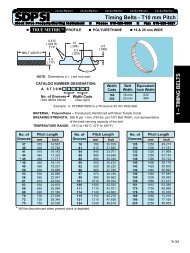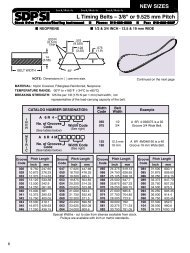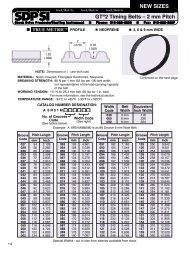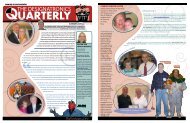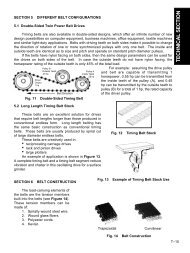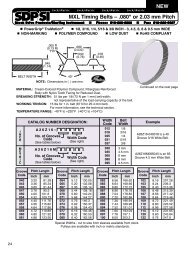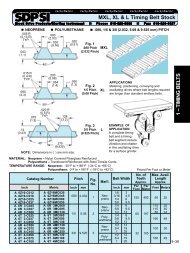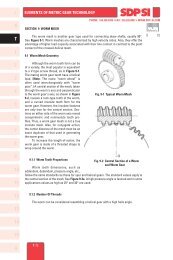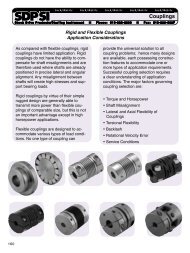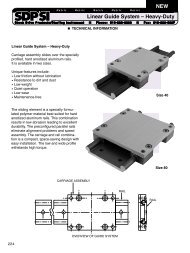I R 1 2 3 4 5 6 7 8 9 10 11 12 13 T 14 15 A - SDP/SI
I R 1 2 3 4 5 6 7 8 9 10 11 12 13 T 14 15 A - SDP/SI
I R 1 2 3 4 5 6 7 8 9 10 11 12 13 T 14 15 A - SDP/SI
You also want an ePaper? Increase the reach of your titles
YUMPU automatically turns print PDFs into web optimized ePapers that Google loves.
ELEMENTS OF METRIC GEAR TECHNOLOGY<br />
PHONE: 516.328.3300 • FAX: 516.326.8827 • WWW.<strong>SDP</strong>-<strong>SI</strong>.COM<br />
From the normalized metric rack, corresponding dimensions for any module are obtained<br />
by multiplying each rack dimension by the value of the specific module m. The major tooth<br />
parameters are defined by the standard, as:<br />
Tooth Form:<br />
Pressure Angle:<br />
Addendum:<br />
Dedendum:<br />
Root Radius:<br />
Tip Radius:<br />
Straight-sided full depth, forming the basis of a family of<br />
full depth interchangeable gears.<br />
A 20° pressure angle, which conforms to worldwide<br />
acceptance of this as the most versatile pressure angle.<br />
This is equal to the module m, which is similar to the inch<br />
value that becomes 1/p.<br />
This is 1.25 m ; again similar to the inch rack value.<br />
The metric rack value is slightly greater than the American<br />
inch rack value.<br />
A maximum value is specified. This is a deviation from the<br />
American inch rack which does not specify a rounding.<br />
1.1.3 Comparison of Gear Calculation Equations<br />
Most gear equations that are used for diametral pitch inch gears are equally applicable to<br />
metric gears if the module m is substituted for diametral pitch. However, there are exceptions<br />
when it is necessary to use dedicated metric equations. Thus, to avoid confusion and errors, it<br />
is most effective to work entirely with and within the metric system.<br />
1.2 Metric Standards Worldwide<br />
1.2.1 ISO Standards<br />
Metric standards have been coordinated and standardized by the International Standards<br />
Organization (ISO). A listing of the most pertinent standards is given in Table 1-1.<br />
1.2.2 Foreign Metric Standards<br />
Most major industrialized countries have been using metric gears for a long time and<br />
consequently had developed their own standards prior to the establishment of ISO and <strong>SI</strong><br />
units. In general, they are very similar to the ISO standards. The key foreign metric standards<br />
are listed in Table 1-2 for reference.<br />
1.3 Japanese Metric Standards In This Text<br />
1.3.1 Application of JIS Standards<br />
Japanese Industrial Standards (JIS) define numerous engineering subjects including<br />
gearing. The originals are generated in Japanese, but they are translated and published in<br />
English by the Japanese Standards Association.<br />
Considering that many metric gears are produced in Japan, the JIS standards may apply.<br />
These essentially conform to all aspects of the ISO standards.<br />
Metric<br />
0 <strong>10</strong><br />
I<br />
R<br />
T<br />
1<br />
2<br />
3<br />
4<br />
5<br />
6<br />
7<br />
8<br />
9<br />
<strong>10</strong><br />
<strong>11</strong><br />
<strong>12</strong><br />
<strong>13</strong><br />
<strong>14</strong><br />
<strong>15</strong><br />
T-9<br />
A



